|
Muzzle Blasts Online |
|
...for the muzzleloading enthusiast |
|
The muzzleblasts.com domain, subdomains, content, etc., are neither affiliated with the NMLRA nor its paper magazine Muzzle Blasts |
|
Muzzle Blasts Online |
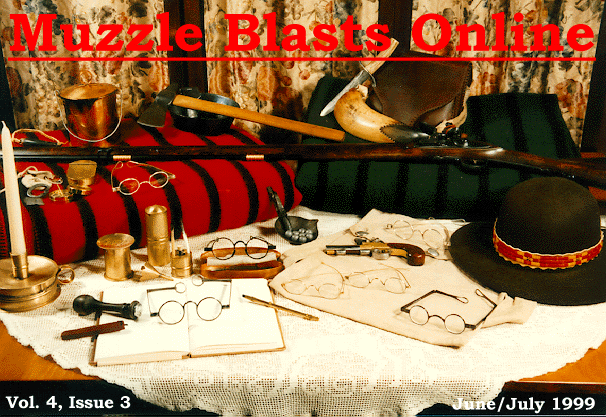
|
|
|
|
|
|
Adventures with Jack Horner

|
|
|
Our story really begins some months before when Jack left the farm and those dull cows to seek his fame and fortune in the big city. Alas, after spending all he had on riotous living, Jack finally found a job finishing horn at a busy three-man horn factory where powder horns were the chief product.
Jack's responsibility was to finish the horns to a uniform wall thickness with an extra-smooth surface. Since the horns had first to be turned at the butt and tip and the threads had to be chased by the turner in the other room, Jack had a couple of minutes before his work would start. In those brief moments before the turned horns arrived, Jack sharpened his tools and wondered if his trip was really going to be worthwhile.
By this point in our story, you may be wondering if there ever were commercial horn works. Could a horn be turned at the butt and tip? Could threads be chased on? Could somebody like Jack actually finish 6,850 horns in a year, and was Jack the worker's real name? The answer to all but the last question is yes. However, we will don our horn rims and gaze only at question number four in this installment. The other questions, alas, will have to wait until future pennings, assuming at least that this attempt at describing the minutiae of hornsmithing is well received.
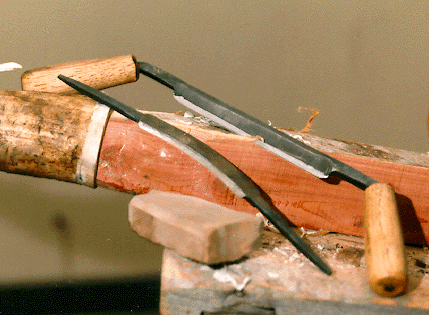
|
|
|
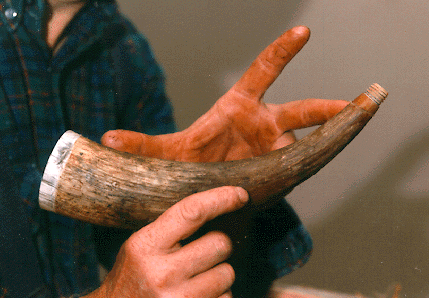
|
|
|

|
|
|

|
|
|
Then a moderately feverish Jack begins to scrape with the curved scraper. Surely the reasons are obvious. It's during this process that chatter marks could appear on the surface. Armed with another bit of knowledge (that chatter is caused by too much speed and not enough feed, and correction is made by slowing the speed and increasing the feed, along with a change in the angle of the blade to the chatter mark), Jack successfully finishes scraping.
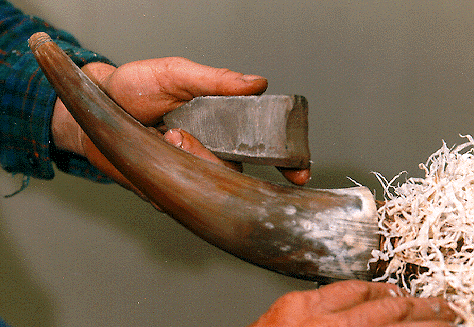
|
|
|
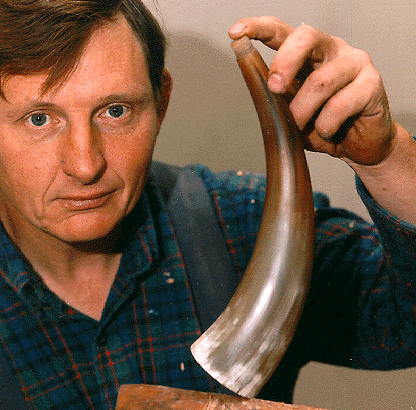
|
|
|
Our last picture shows a triumphant Jack. He knows his part on this horn has taken twenty minutes, and he has only 6,849 horns to go!
Where can one acquire this vast array of horning tools?
Draw knife and curved scraper:
Connor Prairie
13400 Allisonville Road
Fishers, IN 46038;
Robert Chattin
P.O. Box 43
Danielsville, PA 18038.
Scythe sharpening stone: local hardware store. (It will probably be synthetic, but it will work.)
Potash: from your fireplace, wood stove, or campfire.
The method I have described is that used by professional horners. The tools reflect the tradesman's lower-middle-class status. The only other tool sometimes used in the sequence described is a grail file, which is similar to a modern auto-body file.
The health benefits of the above method are obvious especially to those who have mechanically sanded horn without a respirator. The horn shavings are good fertilizer, also.
This article is brought to you by "Jack" and the Honourable Company of Horners. For information about joining the guild, contact:
42 Camino Tetzcoco
Santa Fe, NM 87505.